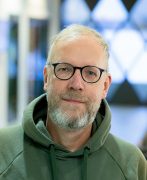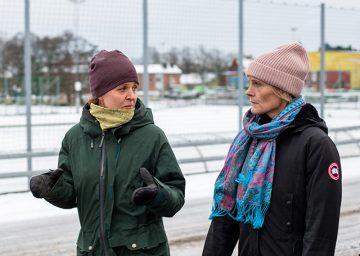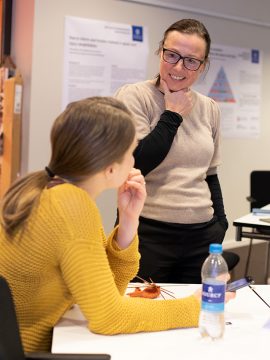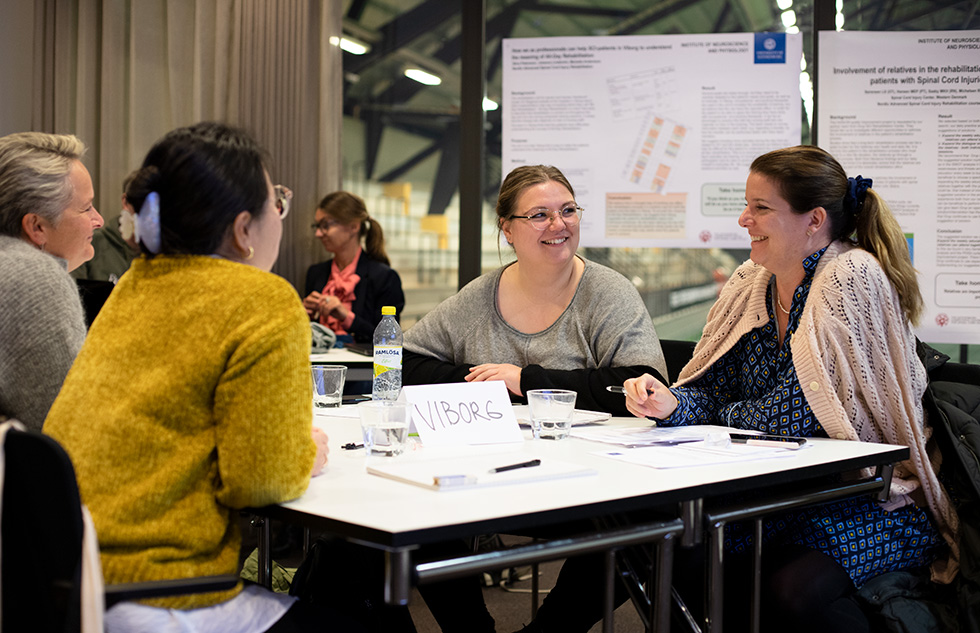EDUCATION. In May, the second Nordic Advanced Spinal Cord Injury Rehabilitation Course began. The is a contract education course given by the Institute of Neuroscience and Physiology on behalf of Sahlgrenska University Hospital and the Nordic Spinal Cord Society (NoSCoS).

The 36 participants from throughout the Nordic region met for three intensive concluding days at Kviberg Arena. We were there and met the course instructor and participants. The participants are all professionally active on teams that work in highly specialized care in the Nordic countries. They have different professions and participate as teams that want to learn and improve together within the area of spinal cord injury rehabilitation.
Teams and problem-based learning

“The key aspect of the course is that the participants come as a team, learn as a team, and implement their knowledge at their current workplace,” says Wolfram Antepohl, who is one of the course leaders and has been involved in designing the course since the beginning.
To be admitted to the program, an existing team had to register as a group. The participants of this hybrid course came to Gothenburg for the first and the final days. In between, the teams worked together and independently with various reality-based cases using the problem-based learning (PBL) method.
The course also includes improvement work, where a team had to come up with an evidence-based proposal and suggest solutions to another team’s problem. They also had access to a supervisor who supported the learning process.
“For some people, problem-based learning was brand new and a bit of a challenge. But most think that real-life cases have made the learning process more concrete, and they’ve been able to implement what they’ve learned in reality,” says Wolfram Antepohl.

Time consuming but rewarding
The participants we talk to confirm that it can take time to learn the problem-based process but that it is very rewarding.
“The beginning of the course was fairly demanding. After the introductory days, I was a little unsure of what was expected from us concerning the cases we would work on,” says Minna Rutanen.
“Fortunately, on my team we had someone who was a bit of a PBL expert can could guide the rest of us, and the process got easier with every case.”

Anna Wahl is a dietician in Linköping.
“On my team, some of us had more experience with PBL than others, and we could work together on both learning and work methods,” she explains.
In addition to the overall syllabus-based outcomes, the participants came up with team-wide and individual learning outcomes. Anna gives an example.
“An example of common learning outcomes for my team was the significance of age with spinal cord injury. Each person on the team came with different knowledge of aging based on their profession and together, we were able to learn about spinal cord injury at an advanced age,” says Anna.
Nordic perspectives and collaborations

Course instructor Hanna Persson explains that spinal cord injury care and rehabilitation have many things in common throughout the Nordic region. However, she says that there are also some differences.
“This course benefits from both aspects, from similarities and from differences,” says Hanna Persson, adjunct senior lecturer at the Institute of Neuroscience and Physiology. Wolfram Antepohl agrees and adds, “The Nordic countries’ spinal cord injury rehabilitation teams are similar enough that they can meet, discuss, and share. They’re also different enough that they have things to learn from one another.”
The ability to organize the course with participants from the Nordic countries has also been essential for another reason entirely: Sweden is too small; there simply are not enough teams in spinal cord injury rehabilitation to fill this course.

“With participants from throughout the Nordic region, we hope to be able to hold this course every other year,” says Wolfram.
The participants are not the only ones from throughout the Nordic region. The course is designed as a collaboration between the various countries.
“We also have supervisors and teachers from different countries. We have had a network for Nordic spinal cord injury rehabilitation, which this course is based upon and expands,” says Persson.
Participant Maria Moschovou says the course has helped provide contacts throughout the Nordic region to whom she knows she can turn to share with and to develop clinical work.
“The Nordic countries have a great deal in common, not just culture and climate, but also when it comes to work methods, and that makes it easier to understand and contribute to one another’s work. Nordic collaboration also enables various projects, research and development, resulting in a greater impact for change and financing.”
Last, we ask course instructor Hanna Persson about the most important things she has learned from implementing this course.
“In addition to meeting the great people who take the course, I want to note three takeaways. The collaboration with teachers and professionals from other countries is very enriching and instructive. Together, we grow and leverage the best from one another. Problem-based learning is an exciting method for teaching but may require more instruction and more of a framework than what you might initially think. And evaluating, taking advantage of good ideas, and planning well in advance make everything much simpler,” says Persson.
BY: JOSEFIN BERGENHOLTZ












